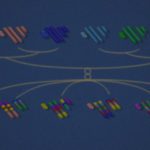Lien vers Pubmed [PMID] – 17298226
Physiol Res 2006 ; 55 Suppl 2(): S93-101
Erythropoietic protoporphyria (EPP) is an inherited disorder of heme biosynthesis caused by partial ferrochelatase deficiency, resulting in protoporphyrin overproduction which is responsible for painful skin photosensitivity. Chronic liver disease is the most severe complication of EPP, requiring liver transplantation in some patients. Data from a mouse model suggest that cytotoxic bile formation with high concentrations of bile salts and protoporphyrin may cause biliary fibrosis by damaging bile duct epithelium. In humans, cholestasis is a result of intracellular and canalicular precipitation of protoporphyrin. To limit liver damage two strategies may be considered: the first is to reduce protoporphyrin production and the second is to enhance protoporphyrin excretion. Bile salts are known to increase protoporphyrin excretion via the bile, while heme arginate is used to decrease the production of porphyrins in acute attacks of hepatic porphyrias. The Griseofulvin-induced protoporphyria mouse model has been used to study several aspects of human protoporphyria including the effects of bile salts. However, the best EPP animal model is an ethylnitrosourea-induced point mutation with fully recessive transmission, named ferrochelatase deficiency (Fech(m1Pas)). Here we investigate the effect of early ursodesoxycholic acid (UDCA) administration and heme-arginate injections on the ferrochelatase deficient EPP mouse model. In this model UDCA administration and heme-arginate injections do not improve the protoporphyric condition of Fech(m1Pas)/Fech(m1Pas) mice.

